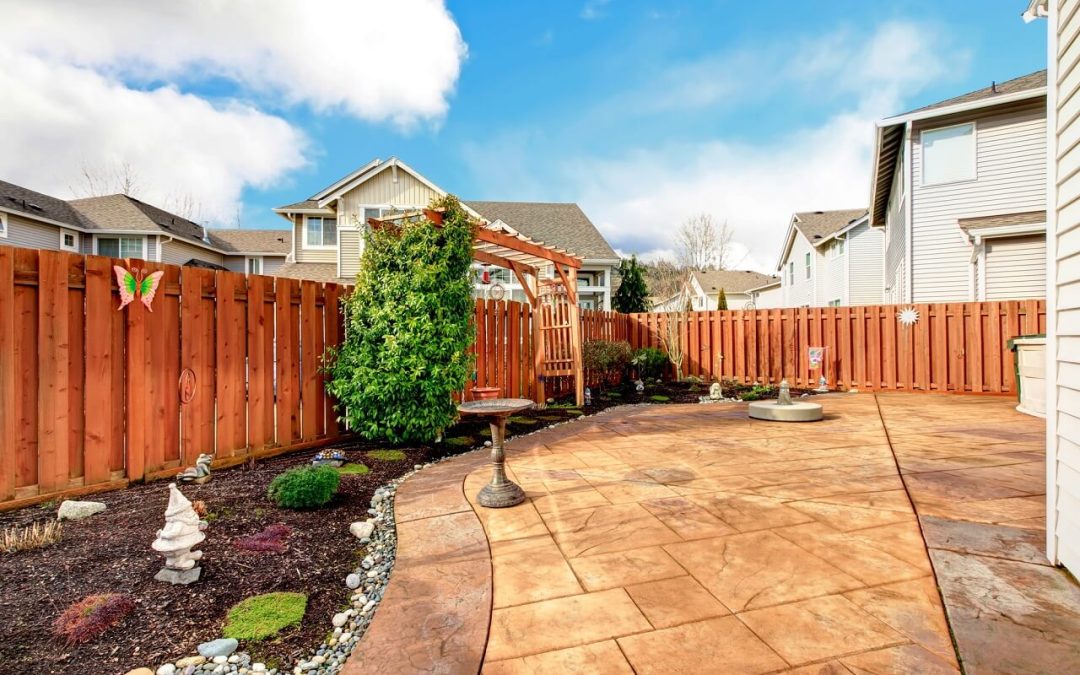Environmental consciousness is increasingly important, and homeowners seek ways to reduce their carbon footprint and make eco-friendly choices. If you’re considering a fence for your property, there are “green” fencing materials that minimize environmental impact and offer durability, functionality, and aesthetic appeal. Here are a few sustainable fencing materials to help you choose a fence for your property.
Sustainable Fencing Materials for Your Home
Bamboo Fencing
Bamboo is a rapidly renewable resource that grows much faster than traditional hardwoods, making it eco-friendly. Bamboo fencing is durable, lightweight, and resistant to pests and rot. It’s also versatile, with a natural aesthetic that complements various architectural styles.
Recycled Plastic Fencing
Recycled plastic fencing offers an alternative to traditional materials like wood and metal. Made from plastic bottles, containers, and other post-consumer waste, recycled fencing diverts plastic from landfills. Recycled plastic is durable, weather-resistant, and low-maintenance, making it a practical choice for eco-conscious homeowners.
Sustainable Fencing Materials: Salvaged Wood
For homeowners who prefer the look of natural wood but want to minimize environmental impact, salvaged wood is an excellent fencing option. Salvaged wood is sourced from old buildings, barns, and structures slated for demolition, giving it a second life and preventing usable material from ending up in landfills. Reclaimed wood fencing offers character, charm, and a unique patina that new lumber cannot replicate.
Recycled Metal Fencing
While metal fencing is typically associated with materials like aluminum or wrought iron, eco-friendly options are available. Look for metal fencing products made from recycled aluminum or steel, which require less energy and resources than virgin metals. Metal fencing provides strength, durability, and longevity while reducing the environmental impact of your fencing project.
Living Fences
Living fences, such as hedges or shrubs, offer a natural and sustainable alternative to traditional fencing. By planting dense vegetation along property lines, homeowners create privacy, define boundaries, and enhance biodiversity on their properties. Living fences provide habitat for wildlife, improve air quality, and contribute to the ecosystem. Prune and maintain your living fence to achieve the desired height and density, offering flexibility and customization.
In addition to choosing eco-friendly materials, you can further minimize environmental impact:
- Opt for locally sourced materials to reduce transportation emissions and support local economies.
- Choose fencing designs that require minimal excavation and disruption to the natural landscape.
- Maintain your fence to extend its lifespan and reduce the need for replacement.
- Consider alternative installation methods, such as dry-stacking or modular systems, that minimize using concrete and other non-renewable resources.
Homeowners can create beautiful, functional, and environmentally responsible outdoor spaces with sustainable fencing materials. A properly designed and installed fence will boost curb appeal and enhance the value of your property.
FAQs
Do I need a permit to build a fence on my property?
It depends on your local regulations. Some areas require permits for fence construction, especially if it exceeds a certain height or if you’re installing it near property lines. Check with your local municipal office, county office, and your HOA to learn about specific requirements.
How do I determine the right height for my fence?
The height of your fence depends on the function, your desired level of privacy, local regulations, and aesthetic preferences. Typically, residential fences range from 4 to 8 feet in height.
Should I stain or paint my fence?
Staining or painting your fence helps protect it from weathering and prolong its lifespan. Choose a stain or paint specifically formulated for outdoor use and follow the manufacturer’s instructions for application.
How do I maintain a fence?
Regular maintenance tasks for fences include removing dirt and debris, inspecting for damage and loose components, and applying protective coatings or sealants as needed. Promptly address issues to prevent more extensive repairs later on.
How long will it take to build a fence?
The time required to build a fence depends on factors such as the size of the area, the type of materials used, and your level of experience. A small residential fence might be completed in a weekend, while larger or more complex projects could take several days or weeks.
First Impression Home Inspections provides comprehensive inspections to homebuyers and sellers in the Shenandoah Valley. Contact us to request our services.

